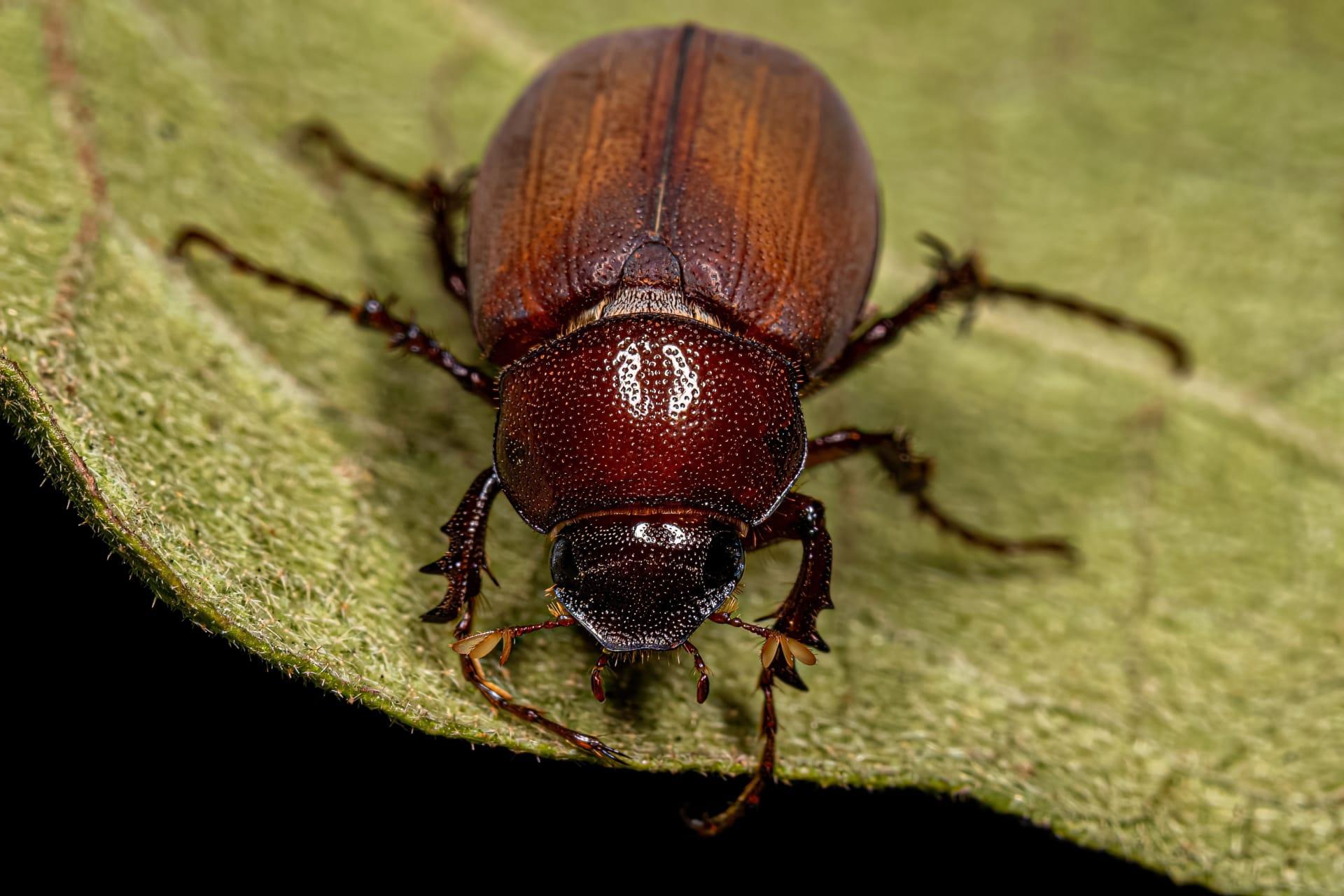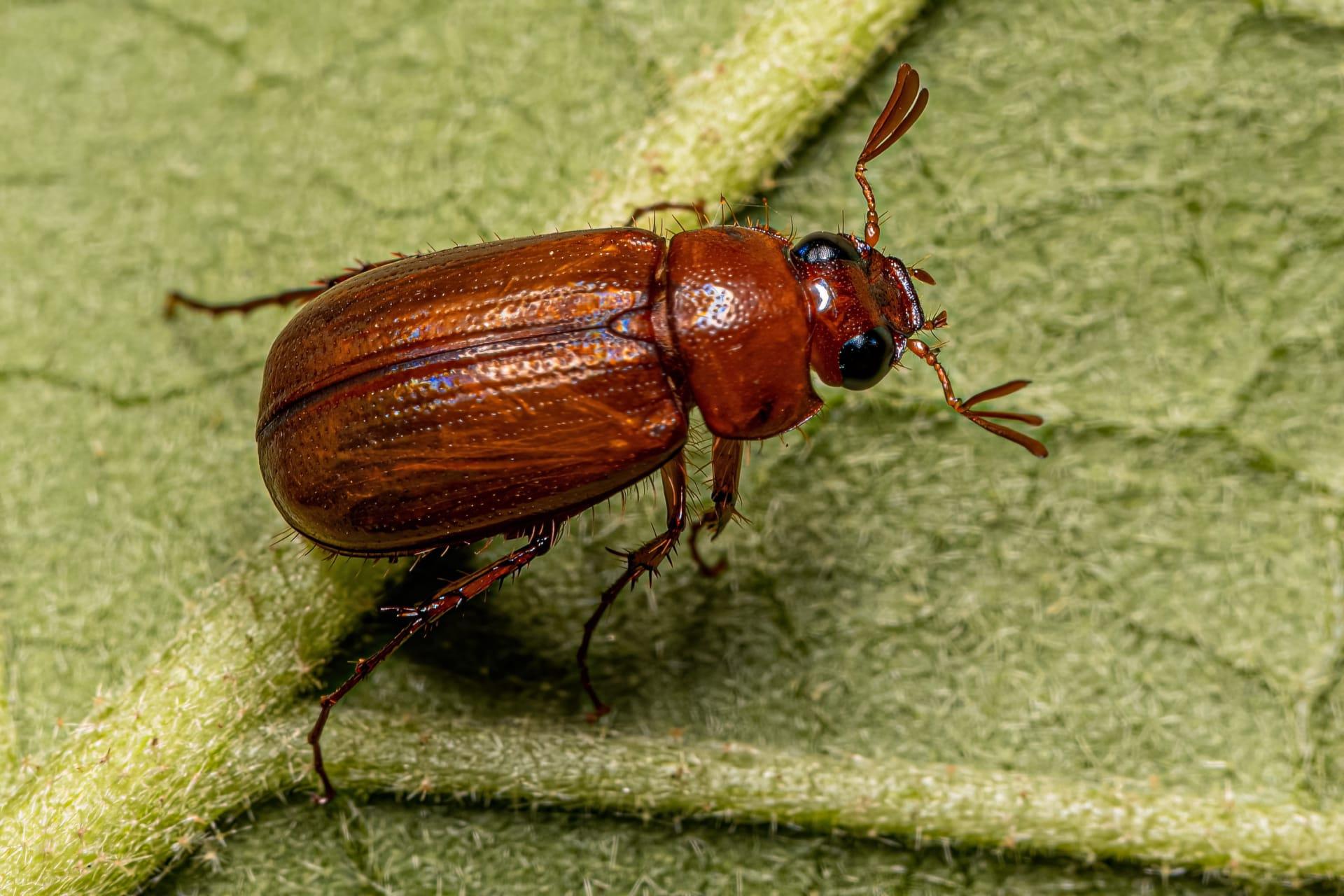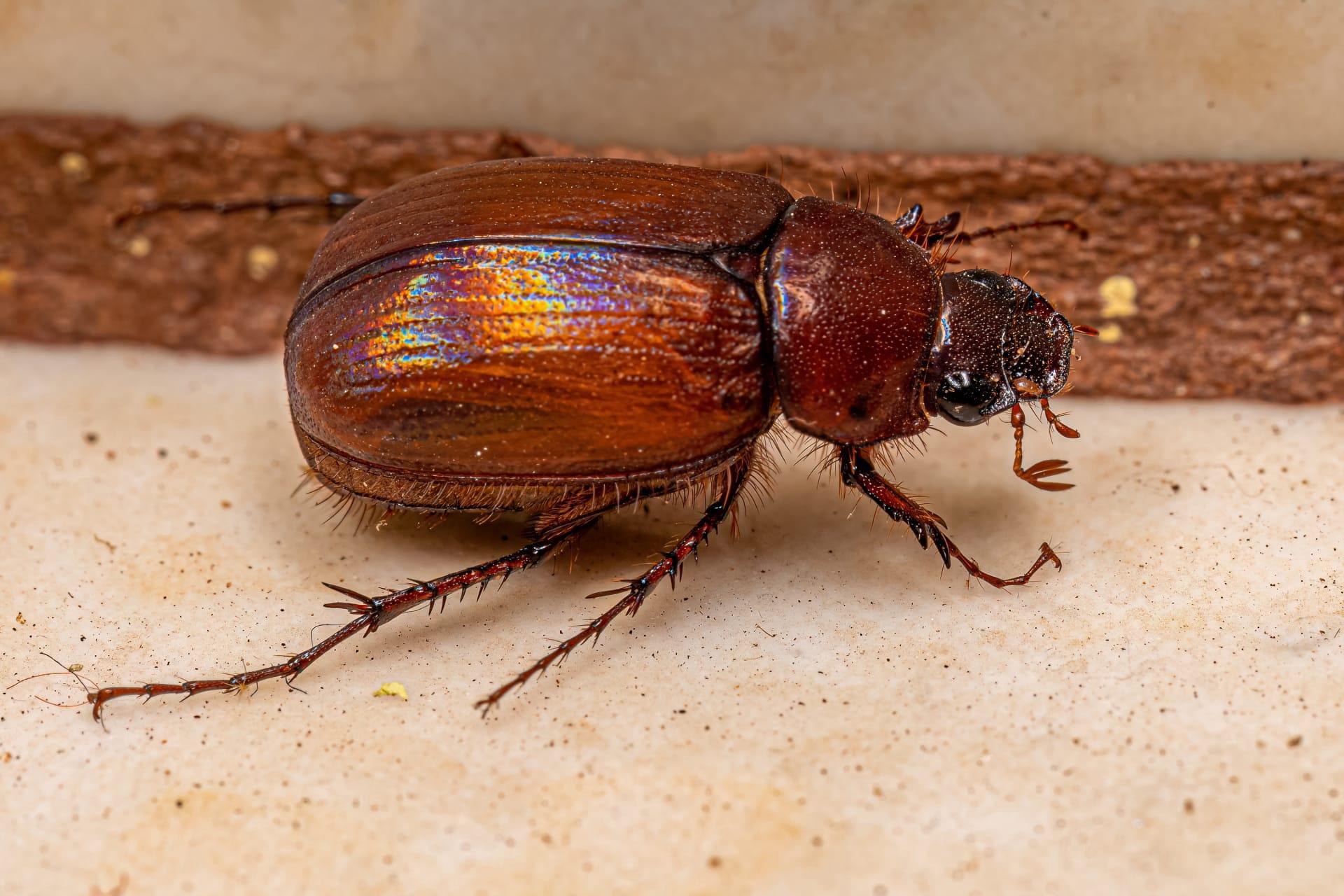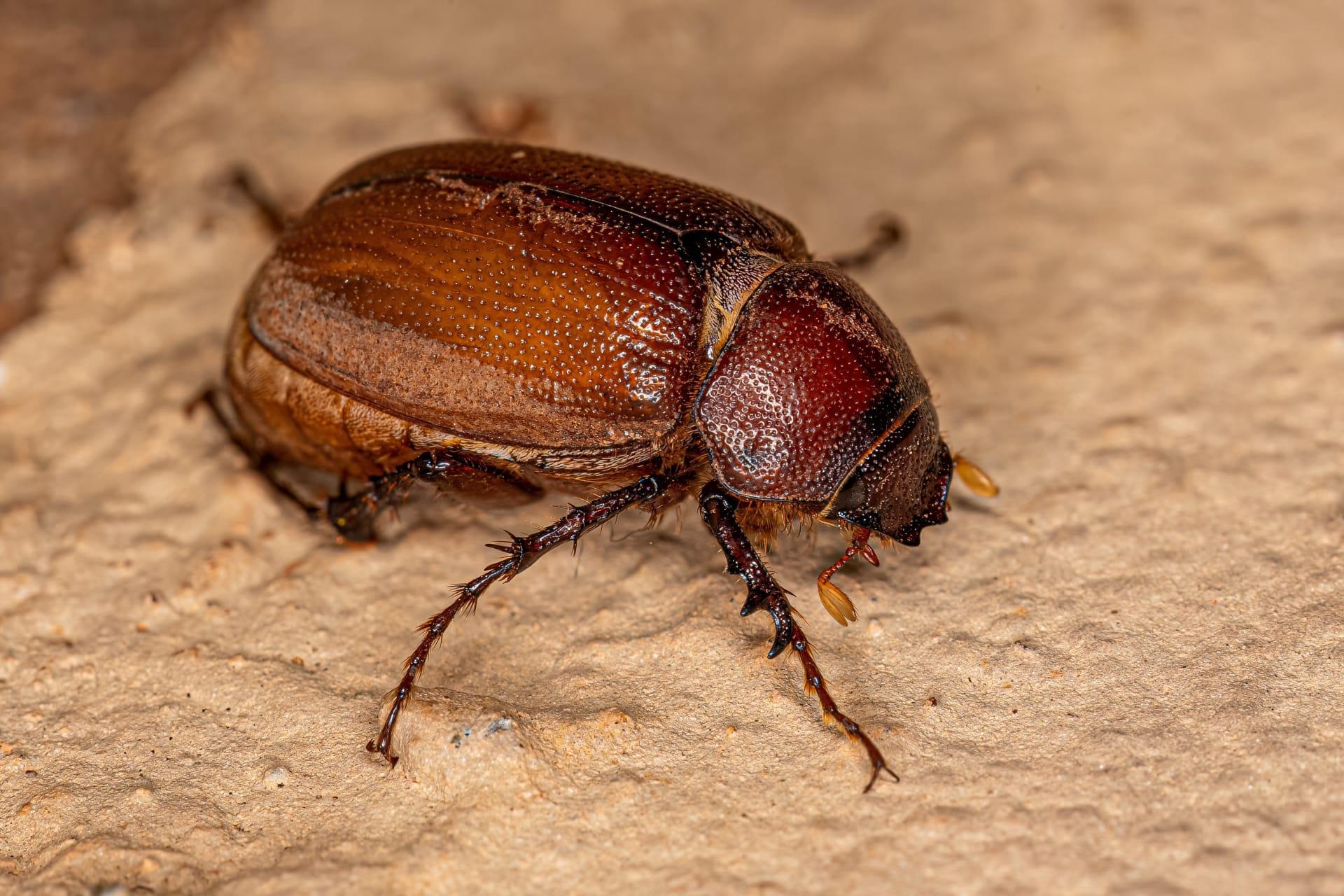June Beetle
- Home /
- Mini Encyclopedia /
- Animal /
- June Beetle
1
The June Beetle, scientifically known as Phyllophaga, belongs to the family Scarabaeidae. This family is diverse, containing over 30,000 species of beetles. Phyllophaga itself has about 400 species in North America. These beetles are characterized by their stout bodies, ranging in size from 12 to 25 millimeters, and their shiny, often brown or black, exoskeletons. The antennae of June Beetles are distinctive, with leaf-like plates called lamellae that they can fan out to sense the environment.
June Beetles are primarily found in North America, though similar species exist globally. Their distribution is widespread across the United States and southern Canada. These beetles thrive in a variety of habitats, including forests, farmlands, and urban areas, but they are most commonly associated with deciduous forests where they feed on leaves and organic matter. The larvae, known as grubs, predominantly live in soil, feeding on roots and organic debris, which contributes to their presence in lawns and gardens.

2
Question: Do June Beetles only appear and cause damage in the month of June?
Answer: Contrary to popular belief, June Beetles are not limited to the month of June. Their name comes from their tendency to become most noticeable in late spring and early summer, particularly in June. However, these beetles are active from late spring until late summer, depending on the climate. The perception of them being destructive pests stems from their larvae, which can damage lawns and crops by feeding on roots. Adult June Beetles are less harmful, mainly feeding on foliage and rarely causing significant damage.

3
June Beetles employ a unique survival strategy during their larval stage, which can last up to three years. The grubs live underground, feeding on roots and organic matter, which shields them from most predators. This subterranean lifestyle also protects them from extreme weather conditions. The larvae have a high fat content, which helps them survive through winters and periods of food scarcity.
As adults, June Beetles are nocturnal, which helps them avoid daytime predators. Their flight is slow and somewhat clumsy, making them easy targets during the day. They are also attracted to lights at night, which is a common way people encounter them. During the day, they hide in vegetation, which provides camouflage and protection. Their hard exoskeleton serves as armor against small predators.

4
In ecosystems, June Beetles play several roles. As larvae, they aerate the soil while burrowing, which can be beneficial for plant growth. However, in large numbers, they can damage lawns and agricultural crops by feeding on the roots. This dual role highlights their complex relationship with human-managed landscapes.
Adult June Beetles serve as a food source for various animals, including birds, small mammals, and other insects. This makes them an integral part of the food web. They also contribute to the pollination of certain plants during their feeding, although they are not as efficient as bees or butterflies in this role. Their presence indicates a healthy ecosystem with a balanced predator-prey dynamic.

5
Film: "The Secret Life of Beetles" is a documentary produced in the United States in 2018. This film explores the fascinating world of beetles, including the June Beetle. It delves into their life cycle, survival strategies, and ecological impact, presenting a comprehensive view of these often-overlooked creatures.
Book: "Beetles of North America" by Jonathan B. Turner, published in the USA in 2020, is a comprehensive guide covering various species including the June Beetle. This book provides insights into their biology, behavior, and habitat, making it a valuable resource for enthusiasts and researchers alike.
Book: "Insects of the Night" by Helen Fielding, published in Canada in 2021, focuses on nocturnal insects including the June Beetle. It offers a captivating look into the behaviors and adaptations that enable these creatures to thrive in the darkness, providing a different perspective on their ecological significance.